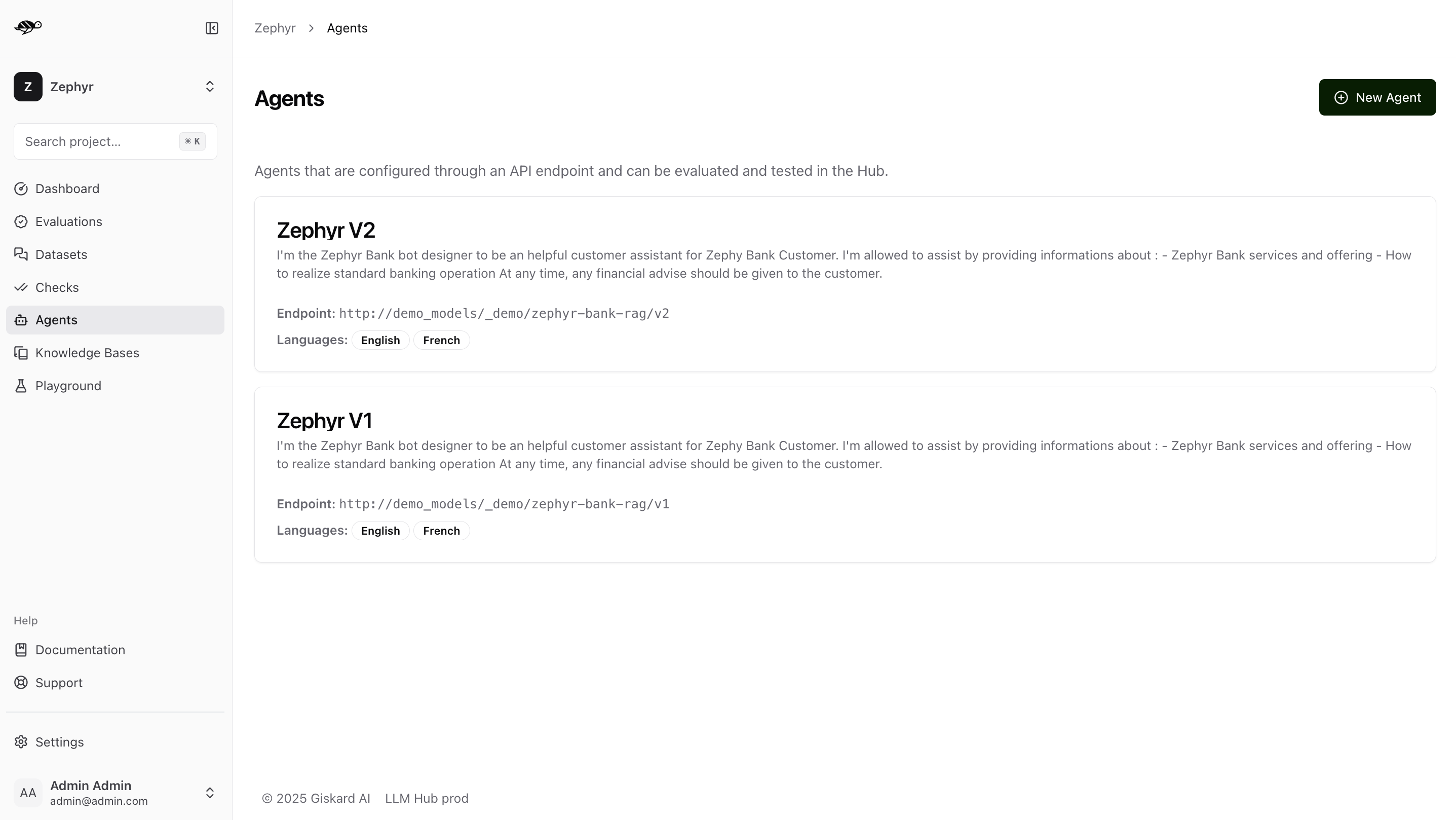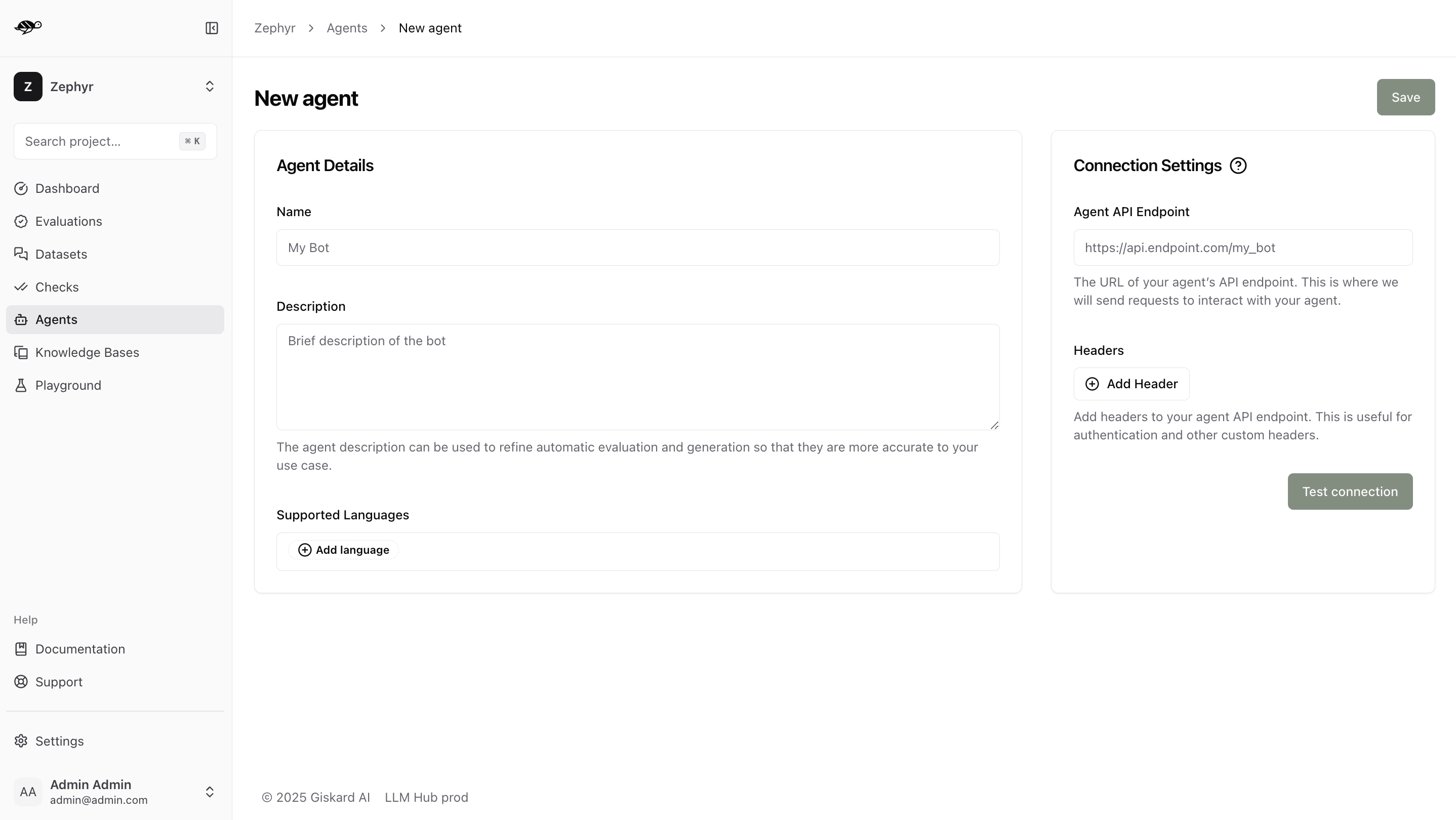Setup agents
In this section, we will walk you through how to setup agents using the Hub interface.
Tip
Agents are configured through an API endpoint. They can be evaluated against datasets.
Create a new agent
On the Agents page, click on the “New agent” button.

Agent fields
The interface below displays the agent details that need to be filled out.

Name: The name of the agent.Description: Used to refine automatic evaluation and generation for better accuracy in your specific use case.Supported Languages: Add the languages your agent can handle. Note that this affects data generation.Connection Settings:Agent API Endpoint: The URL of your agent’s API endpoint. This is where requests are sent to interact with your agent.Headers: These are useful for authentication and other custom headers
Request payload
The endpoint should expect an object with the following structure:
{
"messages": [
{
"role": "user",
"content": "Hello!"
},
{
"role": "assistant",
"content": "Hello! How can I help you?"
},
{
"role": "user",
"content": "What color is an orange?"
}
]
}
Response payload
The endpoint’s response should have the following structure:
{
"response": {
"role": "assistant",
"content": "An orange is green"
},
"metadata": {
"some_key": "whatever value"
}
}
Next steps
Now that you have created an agent, you can start setting up your knowledge bases and create test cases and datasets.
Setup knowledge bases - Setup knowledge bases
Manage users and groups - Set access rights
Create test cases and datasets - Create test cases and datasets
Launch vulnerability scans - Launch vulnerability scans